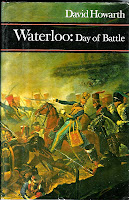 Kathleen E Woodiwiss passed away July 6, 2007.
Kathleen E Woodiwiss passed away July 6, 2007.
The news crept in quietly on one of my loops, not from the news on TV, radio, or the newspapers. I searched for a news report online. Nothing.
 The world does not appreciate, perhaps, what a monumental loss her death is, but I suspect very soon the romance loops, blogs, and message boards will be registering their shock and grief. We’ve lost our pioneer, the woman who launched our modern genre of historical romance, of romance fiction itself. We’ve lost an icon. A mother.
The world does not appreciate, perhaps, what a monumental loss her death is, but I suspect very soon the romance loops, blogs, and message boards will be registering their shock and grief. We’ve lost our pioneer, the woman who launched our modern genre of historical romance, of romance fiction itself. We’ve lost an icon. A mother.
Her son Heath posted the news on her message board. You can read it here. He said that she died of cancer that returned with vengence after the death of another son. In my search for more information I found the notice of Dorren Woodiwiss’s unexpected death June 17, 2007. He’d been only 44.
The Flame and the Flower by Kathleen E Woodiwiss was released in 1972 and became an immediate sensation. It was the first romance novel to open the bedroom door on the hero and heroine. Woodiwiss forged new territory, one that celebrated strong women and showed strong women enjoying their sexuality. The growth of the romance industry to nearly 5o% of all mass market sales shows that readers were hungry for such books and still are.
For me, Woodiwiss help to nurture my love of historical romance. I am not the only romance author who can trace her love of the genre back to Kathleen E Woodiwiss.
I explored Woodiwiss’s website and had to smile. This icon, this pioneer, this mother, talks of the same things we do! Her FAQs speak of familiar reasons to write romance, familiar visions of what makes a hero and heroine. Further exploration online showed that she suffered the occasional bad review and that she had suffered multiple rejections from publishers and agents when she tried to sell The Flame and the Flower. That she doubted herself and her writing sometimes, but at other times got joy from it.
This week the Romance Writers of America, an organizaton of 9,500 members, gathers for its annual convention. Over four hundred of us will be signing our books to raise money for Literacy. We’ll listen to speeches, attend workshops, discuss policies and procedures. We’ll celebrate our finest unpublished and published books of the year. And I’ll bet in every speech, workshop, signing, and ceremony, we will be remembering Kathleen E. Woodiwiss.
We’ll listen to speeches, attend workshops, discuss policies and procedures. We’ll celebrate our finest unpublished and published books of the year. And I’ll bet in every speech, workshop, signing, and ceremony, we will be remembering Kathleen E. Woodiwiss.
And thanking her.
What is your favorite Woodiwiss book? Do you have a memory of reading her for the first time? What has Woodiwiss meant to you, as a reader and/or a writer? As a woman?
I finally found Woodiwiss’s obituary at the Minneapolis Star Tribune online, and information about the funeral from the Strike Funeral Home. There are links to leave words of condolence both places. Fans are also posting on Woodiwiss’s message board and Jude Devereaux’s message board.
Her funeral will be at 11:30 Wednesday, July 11, when we are all gathering for the RWA conference. Amanda, Janet and I will be in the Beau Monde conference, celebrating Regency Historical Romance, and, I suspect, remembering who helped start it all.
 I should tell you all that have a new website! My original plan was to spend this blog talking about it, but some things are more important. Come take a look, enter my contest, sign up for my newsletter, send me an email (although I don’t know how to do the email yet!). Next Monday I’ll post about the RWA conference.
I should tell you all that have a new website! My original plan was to spend this blog talking about it, but some things are more important. Come take a look, enter my contest, sign up for my newsletter, send me an email (although I don’t know how to do the email yet!). Next Monday I’ll post about the RWA conference.
After signing up for my newsletter, sign up for the Risky Regency newsletter at riskies@yahoo.com (please put NEWSLETTER in subject line)!














